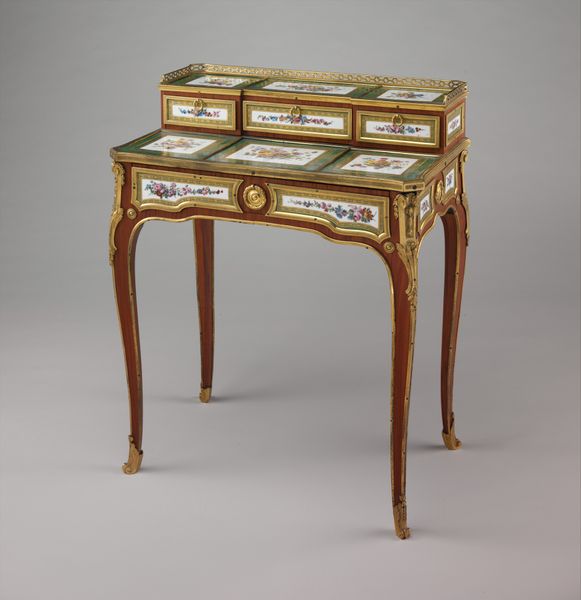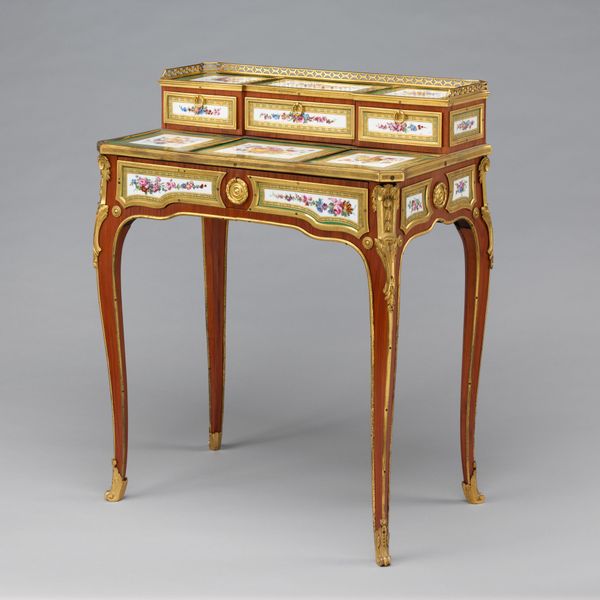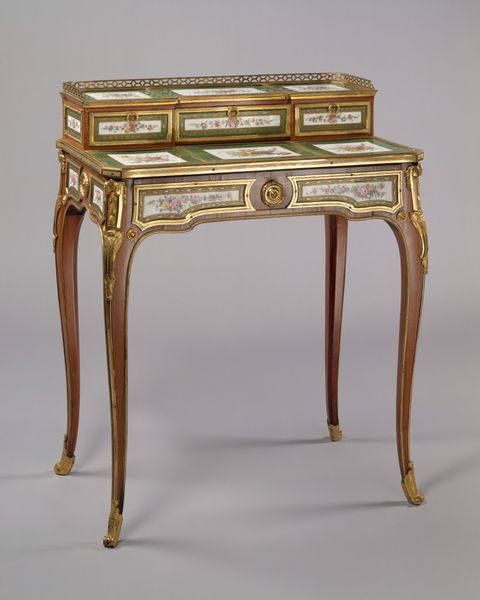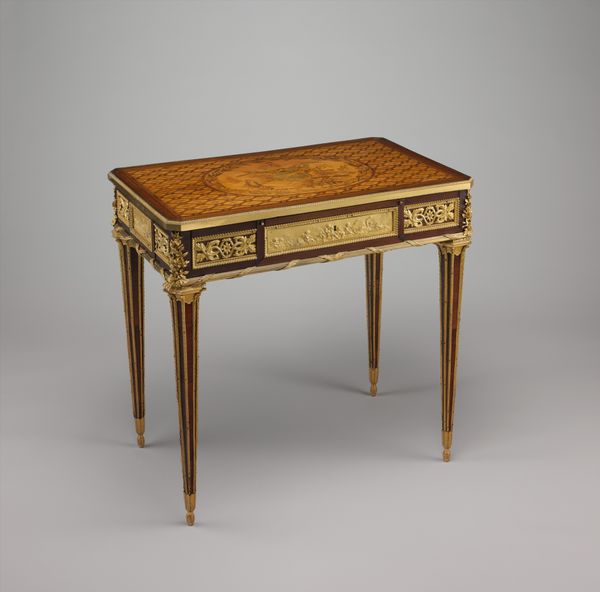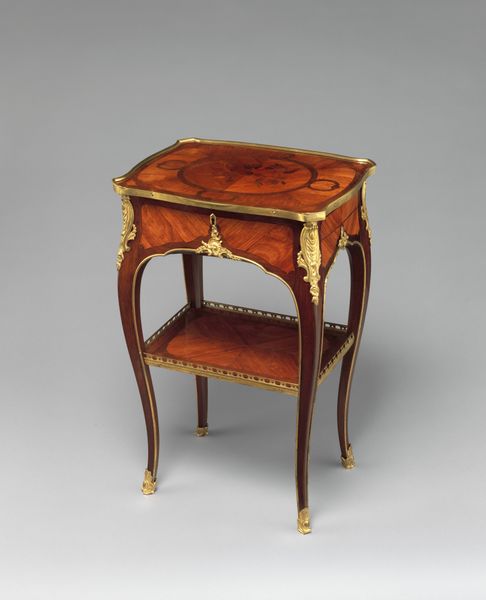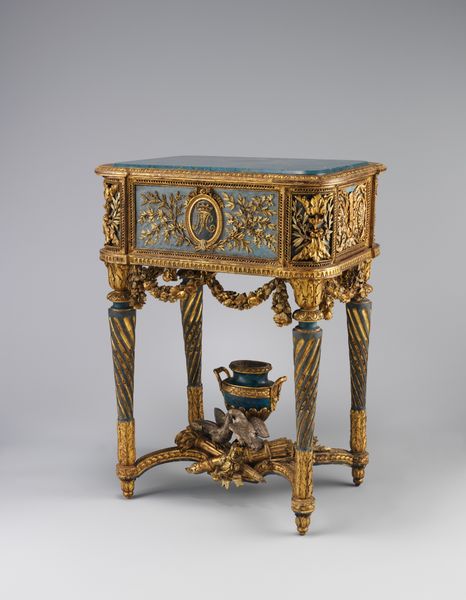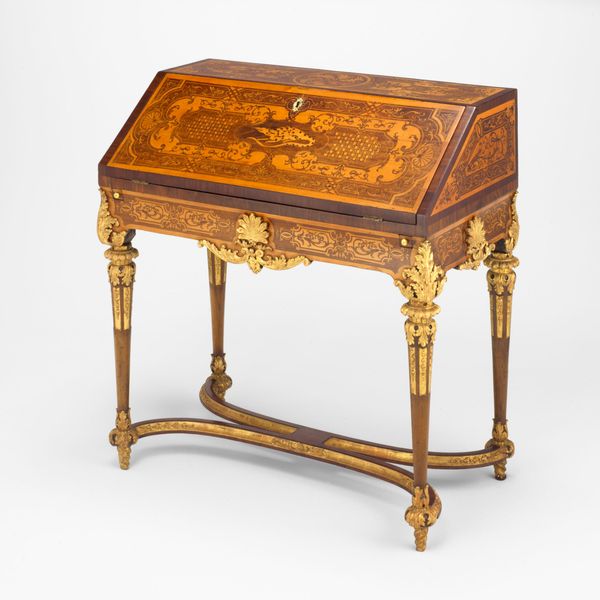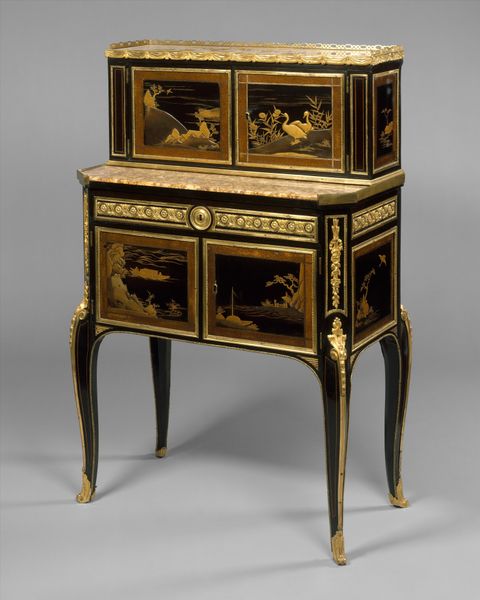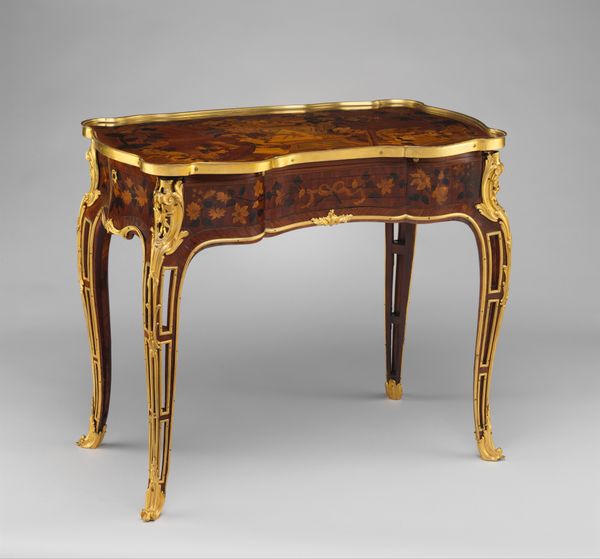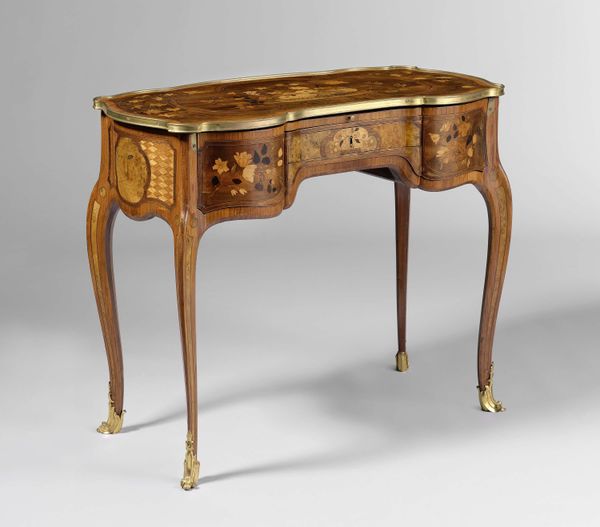
Jewel coffer on stand (petit coffre à bijoux) 1765 - 1775
0:00
0:00
sculpture, wood, gilding
#
furniture
#
flower
#
sculpture
#
wood
#
gilding
#
decorative-art
#
rococo
Dimensions: 37 1/2 x 21 3/4 x 14 1/2 in. (95.3 x 55.2 x 36.8cm)
Copyright: Public Domain
Editor: Standing before us is a jewel coffer on a stand, dating from 1765 to 1775 and created by Martin Carlin. It's primarily made of wood, with gilding and delicate sculptural details. The piece gives off such a sense of luxury and refinement! What's most striking to you about its history and significance? Curator: The “petit coffre à bijoux” speaks volumes about the socio-political climate of its time. Consider its intended audience: the aristocracy, for whom owning such elaborate items was a form of asserting status. The Rococo style, with its emphasis on ornamentation and asymmetry, mirrors the frivolous lifestyle and the court's obsession with beauty over utility. How do you see the use of specific materials reflecting societal values? Editor: Well, the combination of wood and gilding… the precious materials signal wealth, I suppose. Were these types of objects commonly displayed, or were they more private? Curator: Excellent question! These coffers often served as both functional objects and status symbols, proudly displayed within private apartments of wealthy aristocrats, reflecting their taste and cultural sophistication. This object underscores how the decorative arts contributed to social hierarchy and personal identity. It is interesting to think of the craftsmen, whose labour and artistry enabled this display of opulence. Where do you think the line falls between 'art' and 'decoration'? Editor: That's a tricky question! It blurs here, certainly. Perhaps the intent behind the object matters. Decoration aims for visual pleasure, while art strives for deeper communication? Looking at this, though, I see incredible skill. Curator: Precisely. The skills of ébénistes like Carlin elevated craft to an art form, further solidifying the importance of artisanal production in the economy of luxury goods at the time. Thinking about the political turmoil brewing in pre-revolutionary France at that time makes this sort of art fascinating to contextualize. Editor: I never really considered the political aspect of something so beautiful, but it totally makes sense. It makes me look at it with fresh eyes. Thank you for pointing this out. Curator: It's these dialogues across eras and values which truly enrich our understanding of art’s role in society.
Comments
No comments
Be the first to comment and join the conversation on the ultimate creative platform.
